Unforeseen Servant (of Procrastination)
With all of the hullabaloo regarding the 5e announcement, I’ll admit it has taken me quite some time and motivation to getting around to writing this review. Not only because things have been pretty hectic and crazy in the D&D world, but also because I’ve been trying to find the right approach to tackle this book review with. Not to mention debating even writing reviews anymore, I’m not sure how well they are received by my readers or if I’m just flooding the blog community with echo-content. Let me know please, if you could take the time to do so. Anyway onto the book of the vile and the dark.
Subject matter within this book isn’t something that I think is worthy of a simple “Get it” or “Don’t get it” review, due to the content being extremely contextual to your group, your campaign, play style, and many other things. Don’t get me wrong this is definitely more tame than its 3rd edition counterpart, but not that it is devoid of foul and vile things, they are just somewhat sanitarily written foul and vile things. Regardless, this isn’t your typical D&D book.
Summoning Inner GrumpoDaemon
The book is excellently written, as is most all of Rob Schwalb’s work, though I will say that up front there are a few things (particularly theme powers) that left me feeling a bit unsated, which isn’t to say it is Rob’s fault as it’s probably just another scrawl on my growing list of nitpicks I have for 4e. For example when reading the “Contract Killer” paragon path I got a giant rogue-boner, waiting to behold whatever blood dripping thematic elements that lie ahead – and was met with “spend an action point and gain combat advantage against all adjacent enemies!” Really?
I realize that themes are meant to be a very thin layer of mechanics to accompany great narrative, I love themes and the ones in this book are pretty great. But the overall power structure in 4e seems to be growing progressively bland. This relates to a growing concern I have with the game’s power mechanics being a flooded mess that seems to always boil down to an endless shuffle of condition mechanics and combat advantage. Seeing every other power I look at inflicting some sort of status effect or granting CA makes my head start to spin thinking about keeping track of all these things during combat.
Since I’m rarely in the player seat when it comes to 4e, I suppose some might say I have no right to complain about powers or character themes or paragon paths etc. However, as a DM I’m not a fan of keeping track of ALL THE THINGS, I want to kill or be killed and get onto the next interesting bit of the game – whatever it may be, even more combat. I’m not entirely sure why or how every fucking character in the game needs to be a conditions marker vendine machine, is this really all we can do with D&D? The answer is no.
Once again, just a minor nitpick and definitely more of a growing 4e issue for me than specifically a Book of Vile Darkness flaw. Now, onward!
Devilish Duality
The book of vile Darkness is a 2 part supplement, one small book is for players and contains themes, paragon paths, an epic destiny and some really good writing about what it is to play an evil character. The second, much thicker book contains information for the GM on running evil games, parties of evil or otherwise “bad” PC’s, and basically reads like a very long Rob Schwalb blog post – which is a good thing. The book also contains a slew of other goodies like magic items, some really gnarly terrain, and an adventure that leads players into obtaining the Book of Vile Darkness itself, which is an artifact that uses the concordance rules in some very cool ways.
The set also comes with a full poster map that coincides with the adventure within the DM’s book and is generally useful regardless if you plan on running the adventure or not.
Creating Your Evil Avatar
 For the first few pages of the player’s book Schwalb delves into what it is like to play an evil character both in game and at the gaming table, his advice is solid and concise without getting too philosophical on you. The book then goes into types of evil adventuring groups and how you can attempt to make them work for your game and how to focus on group identity for your game, because let’s face it – keeping an evil band of people together for a common cause is a hard thing to pull off. Some of the cooler ideas expressed within this portion for me were Devotees of a Dark God, Family Ties, and Survivors – which deviate from the standard issue rag-tag bunch of criminals (though he covers that as well).
For the first few pages of the player’s book Schwalb delves into what it is like to play an evil character both in game and at the gaming table, his advice is solid and concise without getting too philosophical on you. The book then goes into types of evil adventuring groups and how you can attempt to make them work for your game and how to focus on group identity for your game, because let’s face it – keeping an evil band of people together for a common cause is a hard thing to pull off. Some of the cooler ideas expressed within this portion for me were Devotees of a Dark God, Family Ties, and Survivors – which deviate from the standard issue rag-tag bunch of criminals (though he covers that as well).
Another part of the evil adventurer advice section builds on archetypes such as the antihero, nonhero, and outright villainous characters. Helping you determine an evil PC’s goals, personality, alignment and more are also given at least brief mention and seeds for idea to grow in the darkened corners of your imagination. The book goes on to really drill deep into 4e’s power sources and roleplaying evil for each of those respective roles (arcane, divine, martial, primal, etc.) and then jumps onto the themes. I can say that having read every page of this book that the amount of care gone into the “fluff” of this book was not skimped out on.
Thematic Ambiance
The themes available within the BoVD are the Cultist, Disgraced Noble, Infernal Slave, Reaver, and the Vile Scholar with the Vile Scholar most definitely being my favorite. The themes in the book are evocative narratively but I honestly can’t say they do much for me mechanically, but the Vile Scholar is my favorite for the reason if it being actually somewhat new and innovative to me as far as 4e mechanics go – it has an attack power that targets 3 defenses simultaneously and provides multiple effects based on which (if any) of them hit.
To round out the rest of the player’s book, you have a small assortment of paragon paths (Blood-Crazed Berserker, Contract Killer, Deomonologist, Idol of Darkness, and Vermin Lord), and a single epic destiny, Exemplar of Evil which unfortunately feels about as generic as the name implies (Level 24, gain “Epic Evil” power that makes creatures you kill put out an aura that gives enemies a -2 to hit until the end of your next turn!). To wrap up the book, there’s also small gathering of thematically dark feats that pair well with your new mega-evil PC’s.
The Brightest Black
 The best bits of the Book of Vile darkness are within the DM’s tome, sure it has an adventure that leads PC’s toward obtaining the actual book itself, but that’s to be assumed. There’s also a lot more good advice on running evil campaigns, a bunch of truly evil quotes from some of D&D’s greatest (including Strahd, bonus points!), and a ton of fantastic artwork. But I’m not here to talk about the adventure or the aesthetics of the pages, as a wizards product high production values are to be expected, and BoVD continues the upward trend of recent D&D products and contains lots of narrative, though this is no Heroes of the Feywild.
The best bits of the Book of Vile darkness are within the DM’s tome, sure it has an adventure that leads PC’s toward obtaining the actual book itself, but that’s to be assumed. There’s also a lot more good advice on running evil campaigns, a bunch of truly evil quotes from some of D&D’s greatest (including Strahd, bonus points!), and a ton of fantastic artwork. But I’m not here to talk about the adventure or the aesthetics of the pages, as a wizards product high production values are to be expected, and BoVD continues the upward trend of recent D&D products and contains lots of narrative, though this is no Heroes of the Feywild.
What this book comes through with (for me at least) was the traps, terrain, diseases, and curses and other generally nasty things that you don’t nescessarily need to have a party or campaign full of evil to use. This section is entitled “Vile Encounters” and really makes me wish it would have been included in a core rulebook about 4 years ago for players who wanted threat filled options for their games, oh well, that’s why Fourthcore exists. But I’m honestly happiest with this section because to me it kind of reads like a mini ‘Fourthcore 101’ interperetation on encounter building, though still not as deadly as fourthcore – this is on the right track.
Between a curse that ages PC’s and another entitled “Sentient Tumor” and hazards/traps like Crypt Thing and the Rot Grub Pit Book of Vile Darkness pulls no punches in being one of the deadliest books ever published for 4e. Right up there next to Scott Fitzgerald Gray’s Tomb of Horrors mega-adventure. To round out all of this awesome content there’s also a good handfull of monster themes at your disposal such as the Chaos Beast, Maenads, and the Moilian Dead. There’s also some new monsters like Demons, Devils, and (Fallen) Angels.
Like Black Cotton Candy
The book is packed full of narrative fluff as I mentioned earlier, including good seeds for adventure ideas such as Rob A Grave, Spark A War, Steal A Treasure, and my personal favorite Murder A Hero all clock in relatively high on the awesome-idea-o-meter. These adventure seeds also happen to (probably not coincidentally) sound like bad ass metal ballads. You’ve also got whole campaign themes such as Conquest, and Evil against Evil – Schawlb even goes so far as to outline 2 entire campaign arcs titled “War For Hell” and “Hunger of the Nine Tongued Worm” in a tier by tier breakdown, no evil thought process required! There’s even more stuff for vile organizations, creating villains and all of the sweet magic items they may have in store for your PC’s.
Fourthcore?
It is nice to see more classic D&D ideals expressed within the BoVD as it also explores more cursed and charged items as well as “Sinister Items” which are not to be taken lightly – my personal favorite being the Girdle of Skulls which creates skeletons to fight alongside you when needed.
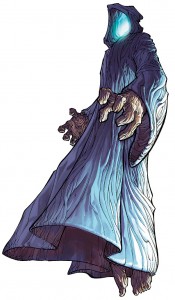 I should go on record that I’m not trying to sound like a pretentious douche when referring to things in this book as fourthcore, or trying to imply that wizards has borrowed wholly from the movement. I will say however, that fourthcore ideals have gained popularity, validity, and recognition among the community (see: Steve Winter, ENnie nominations), could possibly have helped wizards realize that there is a demographic of D&D players out there who want ‘hardcore’ ‘extreme’ playstyle/options, hence Lair Assault, this book, and a few other articles.
I should go on record that I’m not trying to sound like a pretentious douche when referring to things in this book as fourthcore, or trying to imply that wizards has borrowed wholly from the movement. I will say however, that fourthcore ideals have gained popularity, validity, and recognition among the community (see: Steve Winter, ENnie nominations), could possibly have helped wizards realize that there is a demographic of D&D players out there who want ‘hardcore’ ‘extreme’ playstyle/options, hence Lair Assault, this book, and a few other articles.
With today marking the near (it’s tomorrow) 1 year anniversary of Revenge of the Iron Lich, I find it apropos to put up this review and reflect on the ideals of ‘hardcore’ gaming. While many may not agree with my ideals on such things, labeling them as ‘fake difficulty’ or abhorring metagame / gamist ideals at their tables, I say more power to ya, honest. But in closing I will say that I hope to see more material like RotIL, and BoVD written and released, perhaps even by third party publishers (*wink wink, nudge nudge*, WotC) when D&DNext arrives. I know many of you (myself included) may have already begun to lose steam with your 4e games since the announcement of 5e, but my advice to you is to keep on doing what you’re doing and remain positive. Put all your creativity toward newer, greater things because the future for D&D seems bright.
Sealing The Phylactery
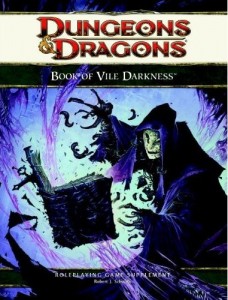 Gotta close this with something dark after all that optimistic talk in the paragraph above, so I’ll say this – all in all, the Book of Vile Darkness is a solid enough title and I’d definitely recommend it if you are into this niche of gaming, for everyone else it may really depend on personal tastes and the current longevity of your 4e campaign(s) as to how much use you may get out of it at least immediately.
Gotta close this with something dark after all that optimistic talk in the paragraph above, so I’ll say this – all in all, the Book of Vile Darkness is a solid enough title and I’d definitely recommend it if you are into this niche of gaming, for everyone else it may really depend on personal tastes and the current longevity of your 4e campaign(s) as to how much use you may get out of it at least immediately.
Also, I can’t help but wonder how heavily handed the editing was on this one, I imagine Schwalb had a much darker tone than what actually came out onto these pages. Regardless of whether you plan on playing D&Dnext or not, modularity considered it should still be a book worth buying if that’s what you’re into. Damn, I suppose that was relatively positive as well. Oh well. Until next time, evildoers!
[info_box]You can grab a copy of the book on Amazon for 20$ or less, and if you use this link I get a small slice of the pie to go towards my hosting costs! [/info_box]
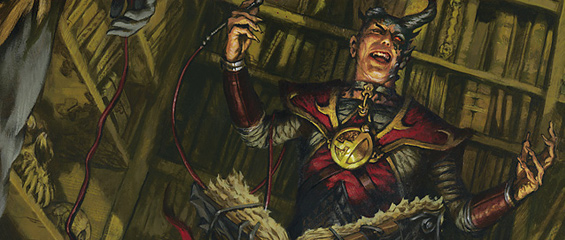

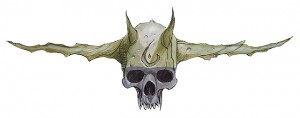

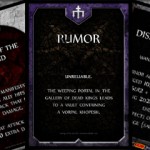
Excellent review. While I have pretty much lost all my steam for 4e, and can’t imagine who the demographic is for Heroes of Elemental WhoCaresWhenIsThePlaytest, it’s good to hear they’re cranking out good products, and borrowing from innovative movements like Fourthcore.
Will there be a Fifthcore? Nextcore? Man, I hope so.
Keep rockin’ those Rogue-boners. That came out wrong…
I think this is the single best comment I’ve ever received on my blog. Heroes of Elemental WhoCaresWhenIsThePlaytest nearly made me do a spit take, then you had to top it off with the rogue-boner commentary. You win the internet, good sir.
Great review! I’ve got the book(s) but not read them yet. Good advice on 4e – my campaigns are both still going strong – it’s just that the likelihood of me getting the chance to incorporate much from this or other recent books like Neverwinter and HotF is fairly slim 🙁
Excellent review. If I hadn’t already picked BoVD up, I’d seriously consider it after reading this review.
Also, how could you leave out the slaad lord cult! (Just kidding)
Another great review. Am still loving 4e and am still enjoying finding blogs like this. Well do e and thanks
Pingback: News from Around the Net: 24-FEB-2012 | Gamerati